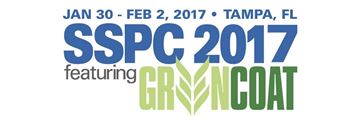Search
Products tagged with 'corrosion mechanism'
View as
Sort by
Display
per page
51316-7212-Formation of Galvanic Cells and Localized Corrosion under Atmospheric Conditions
Product Number:
51316-7212-SG
ISBN:
7212 2016 CP
Publication Date:
2016
$20.00
A Damage-Based Approach and Predictive Modeling of Corrosion in Substrate/Coating Systems Using Artificial Neural Networks
Product Number:
51324-21150-SG
Publication Date:
2024
$40.00
Brake Pads: Effect Of Galvanic Current On The Corrodibility Of Friction Materials And Backplates
Product Number:
51322-17926-SG
Publication Date:
2022
$20.00
Discussion On AC Corrosion Mechanism And Risk Assessment For Cathodically Protected Pipelines
Product Number:
51321-16978-SG
Publication Date:
2021
$20.00
Investigation of Amorphous Deposits and Potential Corrosion Mechanisms in Offshore Water Injection Systems
Product Number:
51317--9433-SG
ISBN:
9433 2017 CP
Publication Date:
2017
$20.00
Mechanistic Insights into Refinery Sulfidation Corrosion
Product Number:
51323-19107-SG
Publication Date:
2023
$20.00
Physicochemical Description of Refinery High Temperature Naphthenic Acid Corrosion
Product Number:
51324-20988-SG
Publication Date:
2024
$40.00
Shale Gas Production Pipeline Failure - Case Study
Product Number:
51324-20698-SG
Publication Date:
2024
$40.00
The Challenge of Balancing Adhesion and Corrosion Resistance in Waterborne Styrenated Acrylic Direct to Metal (DTM) Resins
Product Number:
51217-034-SG
Publication Date:
2017
$20.00










